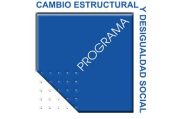Structural Heterogeneity and Social Inequality
Social processes, labor market and income distribution under the regimes of convertibility and post-devaluation. An insight from the perspective of the structural heterogeneity. CONICET PIP 2011-2013 GI
Summary:
This research aims to examine the changes that occurred in the employment sectoral structure, the segmentation of the labor market and the income inequality under different macroeconomic conditions and labor and social policies. One of the core propositions of the research is that economic inequality results from the heterogeneity existing in the economic and occupational structure in an unequal and combined underdevelopment model. Thus, this thesis provides evidence supporting the proposition that structural heterogeneity is a permanent characteristic of Argentina. The existing levels of inequality in Latin America, especially in Argentina in this case, would be related to a development model that creates excess labor force and in which there are large poor sectors under unregistered employment conditions, which do not benefit from the economic “spillover”.
At the same time, the development model concentrates greater welfare capacities in employment sectors related to globalized formal markets, more concentrated and dynamic. From this point of view, the existing level of economic inequality is an indicator of a greater polarization and segmentation in terms of economic and labor-related insertion of households as a structural effect of the accumulation and social reproduction process.
The source of data for this research is the household survey known as Encuesta Permanente de Hogares (EPH), by the National Institute for Statistics and Censuses (INDEC). Databases were processed for a number of years selected from the 1992-2010 period. Based on the information collected, the changes that occurred in the economic-occupational structure, the labor market and the volume of labor income are analyzed, making a distinction in terms of sector and insertion category. Furthermore, the contribution from each source of income to the variation of Gini coefficient is decomposed. This analysis describes robust associations of the particular role that different sources of income have had as factors that account for the changes in the economic inequality.
Members:
Director:
Agustín Salvia
Formed Scholars/Researchers:
Julieta Vera, Julieta
Cecilia Tinoboras
Pablo Gutierrez Ageitos
Our written production can consulted in the following link: Digital library
